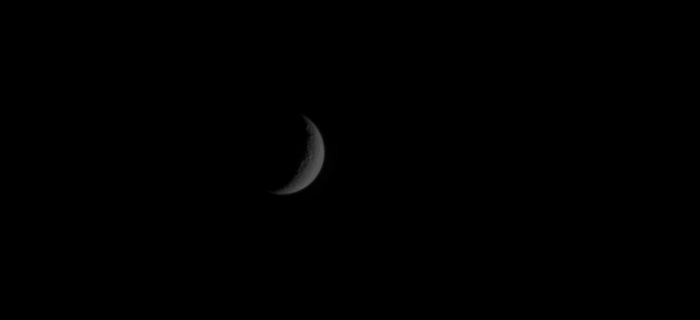
|
Explanation: The moons of Saturn never stop. A space traveler orbiting the ringed giant planet would witness a continuing silent dance where Saturn's multiple moons pass near each other in numerous combinations. Like a miniature Solar System, the innermost moons orbit Saturn the fastest. The above movie was centered on Saturn's moon Rhea, so that the moons Mimas and Enceladus appear to glide by. At 1,500 kilometers across, Rhea is over three times larger than the comparably sized Mimas and Enceladus. The Sun illuminates the scene from the lower right, giving all of the moons the same crescent phase. The above time lapse movie was created by the Saturn-orbiting robotic Cassini spacecraft over a period of about 40 minutes.
|
January February March April May June July August September October November December |
| ||||||||||||||||||||||||||||||||||||||||||||||||
NASA Web Site Statements, Warnings, and Disclaimers
NASA Official: Jay Norris. Specific rights apply.
A service of: LHEA at NASA / GSFC
& Michigan Tech. U.
Based on Astronomy Picture
Of the Day
Publications with keywords: Saturn - motion
Publications with words: Saturn - motion
See also:
- APOD: 2025 November 16 B Crossing Saturns Ring Plane
- APOD: 2025 September 25 B Saturn Opposite the Sun
- APOD: 2025 September 22 B Equinox at Saturn
- APOD: 2025 February 23 B Saturn in Infrared from Cassini
- APOD: 2024 December 8 B Aurora around Saturns North Pole
- Saturn at Night
- APOD: 2024 August 27 B Moon Eclipses Saturn
